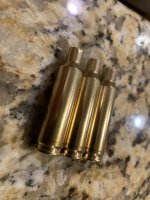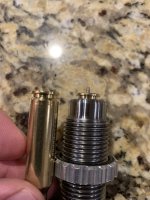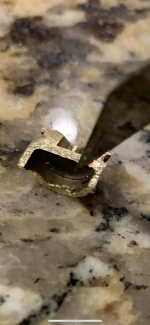I would like to preface this question by saying I am brand new to reloading and I am erroring on the side of caution.
I have just finished de-capping and cleaning my brass. I noticed faint, but distinct, lines on my brass as shown in the picture below. All ~500 cases I have processed seem to have this line. I am concerned that this incipient case head separation that I have read about in my reloading manual.
This seems unlikely however since this is only once fired brass from a stock rifle. Is this incipient case head separation or am I just being paranoid? If it isn’t separation, what could it be for my knowledge. Here is some additional information to help answer the question.
- Caliber: 6.5 Creedmoor
- Once fired Lapua Brass from factory Berger ammunition (140gr Target Hybrid)
- Fired from a bone stock RPR.
- Only ran through a decapping die. I am not really seeing how the decapping die could make these marks.

I have just finished de-capping and cleaning my brass. I noticed faint, but distinct, lines on my brass as shown in the picture below. All ~500 cases I have processed seem to have this line. I am concerned that this incipient case head separation that I have read about in my reloading manual.
This seems unlikely however since this is only once fired brass from a stock rifle. Is this incipient case head separation or am I just being paranoid? If it isn’t separation, what could it be for my knowledge. Here is some additional information to help answer the question.
- Caliber: 6.5 Creedmoor
- Once fired Lapua Brass from factory Berger ammunition (140gr Target Hybrid)
- Fired from a bone stock RPR.
- Only ran through a decapping die. I am not really seeing how the decapping die could make these marks.








